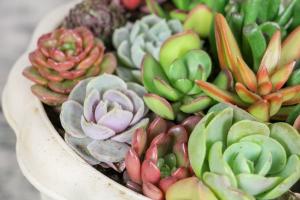Should You Top Your Tomato Plants?
Tomatoes are one of the most common vegetables grown in home gardens. They are easy to grow and provide a bountiful harvest. However, many gardeners are unsure whether to top their tomato plants or to let them grow freely. In this article, we will discuss the benefits and drawbacks of topping tomato plants and help you decide if topping is the right choice for your garden.
What Does Topping Mean?
Topping a tomato plant means removing the top of the main stem or any new growth that appears at the top of the plant. This is usually done when the plant has reached a certain height, usually around four feet tall. By topping the plant, you are redirecting the energy that would have gone into vertical growth into the production of fruit. This can result in a greater yield and bigger, tastier tomatoes.
Benefits of Topping Your Tomato Plants
One of the main benefits of topping your tomato plants is that it can help to increase the yield. By removing the top of the plant, you are encouraging the plant to put its energy into producing fruit, rather than continuing to grow upwards. This can result in a larger number of tomatoes and bigger, juicier fruit. Additionally, topping can help to manage the size of the plant, which can be important if you are growing tomatoes in a small space.
Another benefit of topping your tomato plants is that it can help to prevent disease. When you top a plant, you are removing the top leaves that tend to be the most susceptible to disease. This can help to keep the plant healthy and free from pests and diseases. Additionally, topping can help to improve airflow and reduce the risk of fungal infections, which can be common in tomato plants.
Drawbacks of Topping Your Tomato Plants
While topping your tomato plants can be beneficial, there are also some potential drawbacks to consider. One of the main drawbacks is that it can reduce the overall yield of the plant. Although topping can encourage the plant to produce more fruit, it can also reduce the total number of tomatoes produced. Additionally, if you do not top the plant correctly, you may end up damaging the plant and reducing the yield further.
Another potential drawback of topping your tomato plants is that it can make the plant more susceptible to sunburn. When you remove the top of the plant, you are exposing the lower branches to direct sunlight, which can cause them to burn. This can be especially problematic if you live in a hot, dry climate.
When Should You Top Your Tomato Plants?
The best time to top your tomato plants is when they have reached around four feet in height. This is usually when the plant has developed around six to ten branches. You can then remove the top of the main stem or any new growth that appears at the top of the plant. If you wait too long to top the plant, it may end up being too tall and difficult to manage.
Conclusion
In conclusion, topping your tomato plants can be a beneficial way to increase the yield and keep the plant healthy. However, it is important to consider the potential drawbacks and make sure that you top the plant correctly. Ultimately, the decision to top your tomato plants will depend on your personal gardening goals and the specific needs of your garden.

 how many times do yo...
how many times do yo... how many planted tre...
how many planted tre... how many pine trees ...
how many pine trees ... how many pecan trees...
how many pecan trees... how many plants comp...
how many plants comp... how many plants can ...
how many plants can ... how many plants and ...
how many plants and ... how many pepper plan...
how many pepper plan...
































